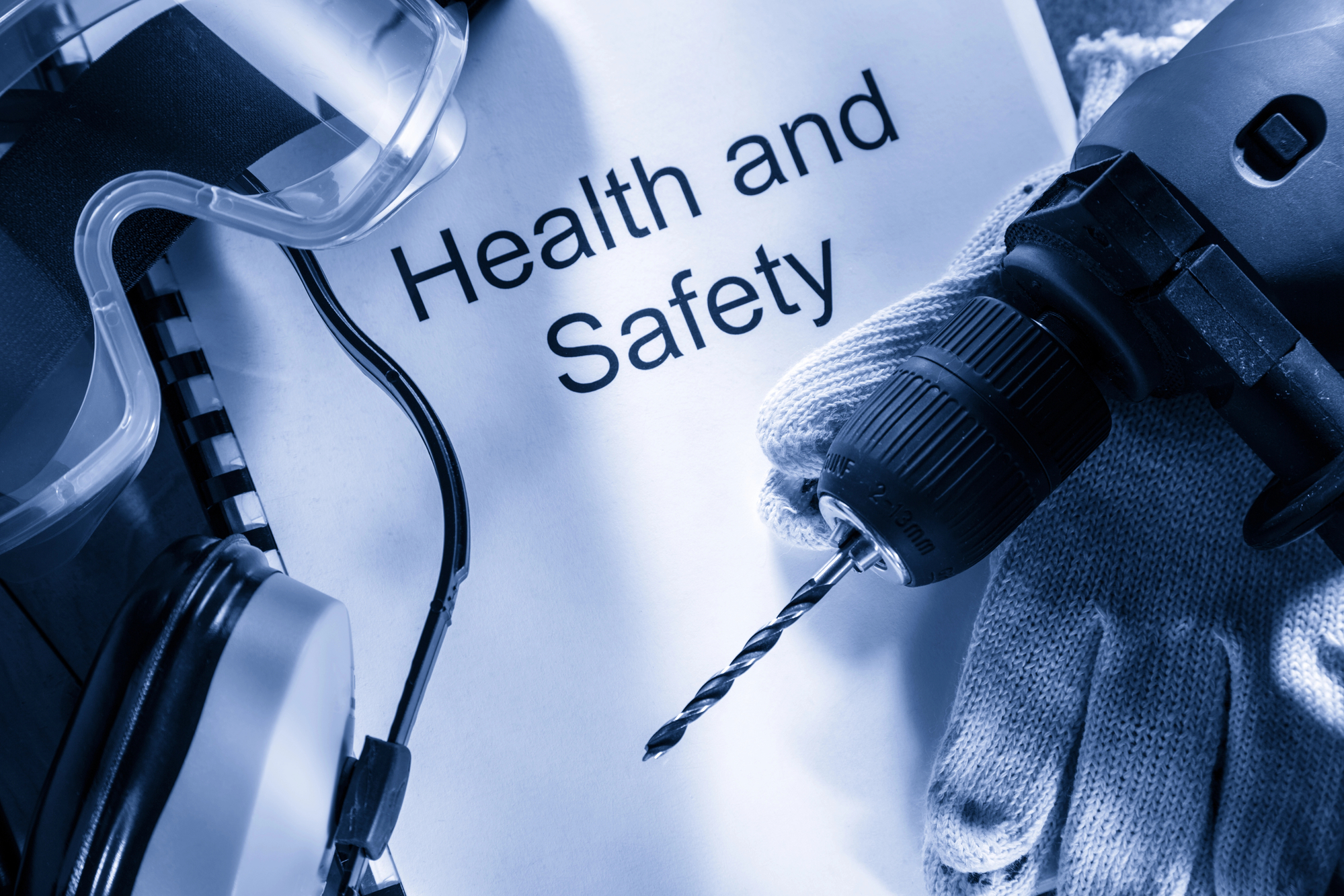Like many other police litigation specialists, police procedures experts and police trainers, I have been intensely interested in the development of medical, pharmacological and biomechanical evidence that tends to shed light upon the phenomena known as sudden in-custody death.
It seems to me that we face three (3) central hurdles in our quest to learn about the causes of these deaths so that we can do more to prevent them.
First, there is developing, but as yet far from complete, medical explanation and agreement among the nation’s emergency medicine physicians, pathologists, medical examiners and researchers regarding the potential causative elements that we can influence in handling suspects and arrestees. That is, we know, that some of these deaths will occur regardless of the best efforts of law enforcement, EMT and paramedic, and emergency room personnel, because many of them are caused by factors beyond our control and influence in the field. But, help is on the way, as explained below.
The second hurdle results from the fact that in most of these truly sudden death events, there are no obvious precipitating circumstances or observable causes. Still, common features can be seen in the wide spectrum of the recorded cases. From these, we an learn what observations should trigger a heightened state of awareness so that a person does not suddenly die in the back seat of a police car, or on the ground, or in the lockup, all without medical aid or care.
The third hurdle is created by the huge gap that exists between what the professional medical community, researchers and experts know on the one hand, and what the law enforcement personnel in the field who are trying to deal with the phenomenon know, on the other.
Hence, it is imperative that as the fund of scientific knowledge about sudden death grows, experts and trainers must cast this knowledge into usable information and protocols that will help officers and supervisors in the field.
Over the years, various police procedures, techniques and tools have been blamed for “causing” sudden in-custody deaths, according to Dr. John Peters of the Institute For The Prevention Of In Custody Deaths: in the early 1980’s it was supposedly the neckholds, the “carotid hold” and vascular neck restraints (infamously and erroneously known as “chokeholds”) which resulted in moratoriums and bans in some departments–notably LAPD; and, trainer Jim Lindell, who has been teaching the Lateral Vascular Neck Restraint Technique (“LVNR”) for 35 years noted recently in The Journal of the American Society For Law Enforcement Training, “Trainer,” Volume 21, Issue 1 (2006), pp. 59-63, that the technique, when applied by a properly-trained and certified LVNR student, has never resulted in a death, nor has any litigation been launched against Kansas City, Missouri Police Department or any other agency or officer as a result of the use of LVNR, a copyrighted and trademarked system, according to Mr. Lindell, President of the National Law Enforcement Training Center (NLETC), who brought LVNR to Kansas City Police Department in 1970; then it was the “hogtie,” hobble device or “total appendage restraint procedure (“TARP”),” and now these techniques are almost universally banned; next, it was the intermediate tools–chemical agents and electronic weapons such as the Taser, which, the critics said or say, pose an unreasonable risk of cardiac arrest.
But the medical evidence has shown that none of these tools or techniques are the causes, in and of themselves, of sudden in-custody deaths.
For example, I wrote a paper in March 2004 entitled “Understanding the Dynamics of Positional or Restraint Asphyxia” (Training Bulletin, Vol. VII, Issue No. 3) which surveyed the evidence for the proposition that the so-called “hogtie” procedure causes death by positional asphyxia. It was concluded therein that while the TARP or “hogtie” alone does not cause death, any control procedure, method or technique which puts the arrestee to an unreasonable risk of asphyxiation should be discouraged. It was there suggested that certain precautions should be taken in every case of the forceful restraint of a violent or combative person, especially one who evidences “super-human strength,” bizarre or schizophrenic behaviors, agitation or hyperactivity, in order to avoid unintended asphyxia which is one of the types of sudden in-custody death:
- Regardless of the technique or device used to restrain and immobilize the person if it is necessary to place him or her in a prone position, get the wrists and legs restrained as quickly as possible, and then roll the person onto the side or back, so that breathing will continue unimpaired.
- If possible, re strain and secure the person while he or she is supine, not prone.
- One team member, preferably a supervisor, needs to remain somewhat disengaged so that he or she can orally direct the others. Team members must permit the leader to coordinate efforts.
- Always assign at least one team member to safely and carefully monitor the person continuously and watch for any changes in breathing and consciousness.
- Have a plan; have a back-up plan. Make sure an EMT or paramedic is close by or on the way to you.
- Any employment of this restraint technique should be individually documented by each team member, and immediately reviewed by an uninvolved supervisor. The investigation should follow the customary “use of force” investigation protocol.
- In cases where the restrained person continues to struggle even after wrist and leg restraints are in place, and it is necessary to transport the person to a medical facility on a gurney or long backboard, soft 4-point restraints (such as gauze) can be snugly fastened to the gurney or backboard to keep the person safely immobilized on his or her back in a supine position. If transport is to be in the police car (not re commended), keep the person sitting up, not laying on the chest and abdomen
- Consult with local paramedics or EMT personnel to devise protocols and methods for handling these difficult situations. These professionals are trained in how to restrain violent persons without impairing breathing.
- Remain alert to developing use of force and restraint methodology to make sure agency members are taught in accord with the currently accepted policies and techniques.
Well, if TARP methods, neck holds and Tasers do not “cause” sudden death, what does? The present state of the research and study shows that a number of factors, either singularly or in combination with others, may precipitate sudden in-custody deaths.
Our job is to first understand the dynamics of sudden death events, paying careful attention to the commonalities present. Then, we can develop a list of situations, symptoms, behaviors and signs which are “red flags” and which will trigger specific protocols in the field to (hopefully) reduce the numbers of sudden death events “at the hands of police” either on the ground, in the police car, or in the lockup. If these persons are going to die, even with prompt medical care, better they die while receiving that medical care in the ambulance, paramedic van, or in the emergency room, instead of in police custody with no medical care yet en route. The point is, recognize the situation and get professional medical care on scene as soon as possible The current relevant medical and research literature shows that certain persons are predisposed to sudden death, arising from organic disease, drug and alcohol abuse, mental illness and preexisting cardiac abnormality (cardiomyopathy), to name a few. Often, these combine with extreme physical exertion in a so-called “cascade effect” to bring about sudden death. A few of these are explored below.
Cardiomyopathy refers to some abnormality of the heart that predisposes the host to sudden cardiac arrest. This condition can also result from chronic alcohol or drug abuse. The condition, if combined with extreme and sustained physical exertion during say, resistance to arrest, is thought to be implicated in many sudden death events, according to Dr. Jeffrey D. Ho, M.D, in an article published in POLICE magazine, “Sudden In-Custody Death,” pages 47-56, August 2005. Some suspected “positional asphyxia” cases may actually have resulted from a condition known as “excited delirium” (also known as “acute exhaustive mania”). Delirium is not a new medical phenomena. As Dr. Peters observes, it was first recognized in 1849 in an asylum, and thereafter known as “Bell’s Mania”.
The medical and research literature documenting investigations into the likely causes of sudden deaths in police custody have produced a fairly consistent pattern of commonalities that can be arranged into list of behaviors, symptoms, situations and circumstances that collectively should alert officers that the unfolding event bears a risk of sudden death for the person being confronted by officers:
- the person exhibits bizarre, anxious,
irrational or violent behaviors; - the person may be under the influence of
alcohol or illicit drugs such as cocaine,
methamphetamine or PCP; or, the person may
have a history of abuse of these substances. - the person either is not communicating, or
the communication is incomprehensible, repetitive,
or otherwise unfocused and inappropriate to the
circumstances; - the person may focus his attention, anger,
or violent behaviors upon inanimate objects, while
otherwise ignoring the surroundings; - the person may exhibit extreme paranoia;
- the person may be sweating profusely;
- the person may be screaming for no
reason, or at no one in particular; - the person may shed clothing or be naked;
- the person has no apparent sensitivity to
pain stimuli and displays super-human endurance
and strength; - the person is hallucinating;
- the person may be experiencing the effects
of psychotropic medication withdrawal and is
manic-depressive, schizophrenic or is otherwise
actively psychotic; - the person is able to violently resist several
officers and in particular resists the application of
restraints, such as handcuffs or leg and waist
chains, and the application of spit masks; - even after control is achieved, the person
continues to struggle mightily against restraints,
apparently to the point of the limits of human
endurance;
- the person may exhibit muscle rigidity and
“stiff” movements;
- the person’s body temperature is elevated
and the face, head and neck appear reddened or
flushed; - the person’s breathing may be impaired or
restricted by control and restraint techniques, or
due to over-exertion or exhaustion; - the person appears disoriented or exhibits
rapid changes in emotions and behaviors; - after sustained and extreme exertion, the
person suddenly becomes still and quiet; - the person may be obese; or
- the person may mutilate himself or seem
impervious to traumatic injuries he has sustained
(for example, severe bleeding from crashing naked,
through a plate glass window).
Dr. John Peters of the Institute For The Prevention Of In-Custody Deaths suggests that as soon as officers are sent to confront a person exhibiting some or all of the above symptoms and behaviors, emergency medical personnel should be dispatched at the same time, because the presence of these cues indicate a medical emergency as well as a situation requiring immediate police intervention. One team member must constantly monitor and evaluate the person’s respiration and consciousness.
The person should be controlled as quickly as possible and not maintained in the prone position. The person may need to be sedated. Dr. Peters suggests agencies should consider development of a specialized response team to handle situations known to constitute a high risk of sudden death. Readers may wish to access www.ipicd.com or www.incustodydeath.com for recent updates on in custody death research. Dr. Peters notes that there are four phases of excited delirium-related in custody deaths:
- Hyperthermia — marked elevation in body
temperature as high as 106 degrees and evidenced
by profuse sweating and stripping off of clothing. - Delirium – – hallucination-like behaviors
featuring “super-human” strength, endurance
and resistance, even after control is achieved. - Respiratory Arrest–The person collapses
or suddenly becomes quiet and still; may be
accompanied by purple coloration of the face and
head (cyanosis) and no pulse indicating cardiac
arrest. - Death – – caused by cardiac arrest.
Some Notes About Investigatory Protocol
In any case of sudden in-custody death, it is vitally important to secure core body temperatures as soon as possible. Blood samples must be obtained rapidly, but not later than 11 hours after death, and then frozen or otherwise preserved according to customary forensic protocols. The brain should be harvested and sectioned at autopsy as soon as possible after death, but within 12 hours, with brain tissue sections packed in dry ice according to the customary protocols for tissue sample transportation and delivery and sent to the Neurochemistry Lab at the University of Miami, in care of Dr. Deborah Mash, M.D., lead researcher, who can be contacted by telephone at 1- 800-UMBRAIN. Dr. Mash is a pathologist with an interest in neurophysiology. Hair samples should be taken for drug testing, especially if body fluid toxicology reports are negative for drug use. Thorough documentation of the entire event that resulted in sudden death is essential. In particular, the person’s behaviors and activities and duration of these prior to police intervention must be recorded from the statements of family members and witnesses. Once police respond, every moment of the unfolding event should be meticulously assembled so that a medical examiner can virtually “reconstruct” the event leading up to death, as if preparing a video replay of the event, according to Dr. Charles Wetli, M.D., Suffolk County Medical Examiner, New York.
In February 2006, I visited with Dr. Christine Hall of the Calgary (Canada) Health Region Department of Emergency Medicine. Dr. Hall is leading a multi-national three-year study of sudden in-custody death events designed to identify the scope of the problem from the perspective of the street officer and on-scene medical personnel.
Dr. Hall notes that the focus of her study will not emphasize specific restraint procedures but rather to look at the whole picture!! Her study will review in-custody deaths and the reasons they occur.
An important part of her prospective-based study will be to determine whether sudden in-custody death is a big or small problem. That is, how do we identify what kinds of situations or encounters will result in a poor outcome? Or, is there no certainty of factors that predicts the outcome? What clues or indicators exist that demonstrate that a situation is likely to go badly for the officer and arrestee? There is no scientifically-based answer. For example, police confront a naked man, walking stiff-legged, not making any sense, who is impervious to pain, sweating and bleeding. Her research question is “are there situational or subject characteristic features that predict a poor outcome when force is used upon such a person?”
Dr. Hall’s study will not attempt to vindicate any particular tool (i.e. Taser), or method of restraint, or any particular individual officer, policy, or individual who died while in custody. Rather, the purpose of the study is to permit the target audience to know what it is likely to confront. What is the relative risk of a combination of symptoms/factors that will dictate a likely outcome? Her study will incorporate data from many different agencies in all parts of the United States and Canada, in an effort to obtain representative data. Dr. Hall can be contacted at C.hall@calgaryhealthregion.ca
Conclusion
I remain fascinated by this subject, because I have seen a number of these sudden deaths in cases I am tasked with defending. But I am also intensely interested in a prospective sense, because I want to see our police officers forewarned, so that they are better equipped to handle these situations in the field. All of our nation’s law enforcement officers and officials need to give this phenomenon their attention, so that as soon as new information is developed by research and study, it will be disseminated to those who need it the most: the men and women who are in the field.
Stay Safe!
Michael P. Stone is the founder and principal partner of Stone Busailah, LLP. His career in police and the law spans 50 years. He has been defending law enforcement for 38 years in federal and state, criminal, civil, administrative and appellate litigation.







